An Iron Age cemetery, 2500 years old, was discovered by builders who were working on a David Wilson Homes development in Pocklington, a small market town situated at the foot of the Yorkshire Wolds in the East Riding of Yorkshire (East Yorkshire) in England. Early Britons were much more sophisticated than historians and anthropologists had realised.
The archaeological site is of ‘national and international significance’, said a spokesman for the Coalville-based construction company.
A team of archaeologists could not contain their excitement at this incredible discovery of an Iron Age settlement, which houses a large graveyard. They say it probably has enough material for the biggest Iron Age settlement study in the UK since the mid-1980s.
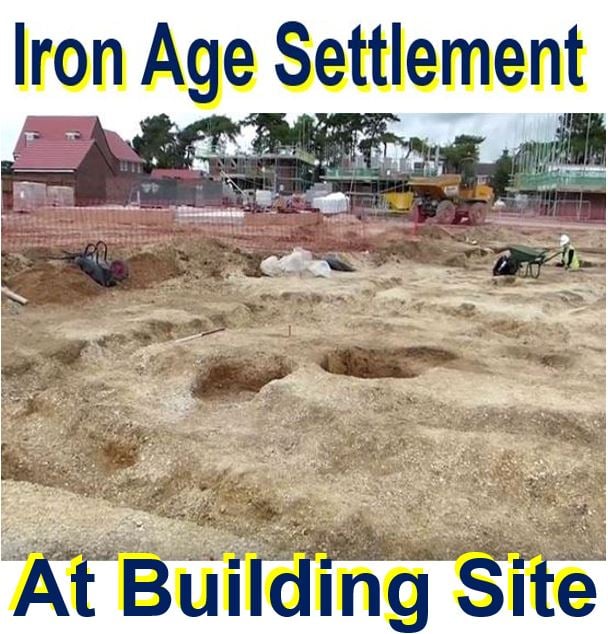 An Iron Age settlement with a large graveyard was discovered while building workers on a housing project were excavating. As you can see on this image, builders and archaeologists now work side-by-side. (Image: YouTube)
An Iron Age settlement with a large graveyard was discovered while building workers on a housing project were excavating. As you can see on this image, builders and archaeologists now work side-by-side. (Image: YouTube)
So far, 360 amber and glass beads have been unearthed, as well as ten spears, a sword, ancient pots and brooches, and a shield.
It is becoming clear, since so many ornamental specimens have been discovered at UK sites over the past couple of years, that Iron Age Britons were not just a ‘savage lot’ – they were much more sophisticated than we had thought. Given that several weapons are always unearthed at these sites, and many skeletons show signs of battle wounds, they were also fierce warriors.
Over seventy skeletons discovered
Paula Ware, Managing Director of MAP Archaeological Practice Ltd., which is conducting the excavation on behalf of David Wilson Homes, and colleagues discovered more the seventy human skeletons in square barrows.
The skeletons were from the Arras Culture, a group of Iron Age people that existed in during the Middle Iron Age (400-100 BC) in East Yorkshire, named after a cemetery site at Arras Farm, near Market Weighton, which was discovered in the nineteenth century.
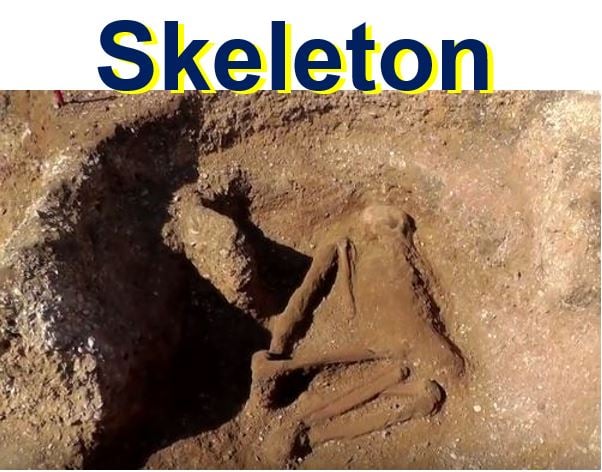 This skeleton, found in a barrow (mound of earth over the remains of the dead), is lying on its left side, facing east, with the head facing north. Archaeologists do not know what that log-type thing next to the skeleton is or what it was for. (Image: YouTube)
This skeleton, found in a barrow (mound of earth over the remains of the dead), is lying on its left side, facing east, with the head facing north. Archaeologists do not know what that log-type thing next to the skeleton is or what it was for. (Image: YouTube)
Some of the bone specimens will be taken to the lab and carefully analyzed. Scientists aim to determine how the humans who were buried there died, what kind of lifestyles they had, and whether they were related (how many of them were locals).
Regarding the Arras Culture square barrows, Ms. Ware said:
“To date, the east of Yorkshire has the largest concentration of ‘Arras Culture’ square barrows, and naturally these findings have helped to strengthen this.”
“We are hoping that these findings shed light on the ritual of Iron Age burial – and, as we can assume from the shield and sword burials, these were significant members of society, so our understanding of culture and key figures of the time could be really enhanced.”
“On the whole this is a hugely important discovery and is a fine example of what can be revealed and discovered if house developers and archaeologists work hand-in-hand to reveal the nation’s hidden history.”
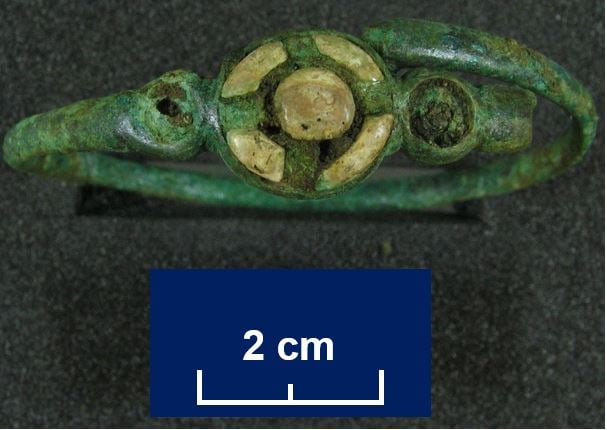 An ornamental bronze bracelet with coral enamel. Specimens like this one suggest that Iron Age Britons were artistic and sophisticated – traits that historians and anthropologists are only now beginning to use when describing Britain’s Iron Age people. (Image: maparchltd.com)
An ornamental bronze bracelet with coral enamel. Specimens like this one suggest that Iron Age Britons were artistic and sophisticated – traits that historians and anthropologists are only now beginning to use when describing Britain’s Iron Age people. (Image: maparchltd.com)
Archaeological site discovered during construction project
David Wilson Homes workers discovered the 2,500-year-old Iron Age settlement after a housing development project (Pavilion Square development) started in September 2014.
BBC 4 has a series – Digging for Britain – that talks about archaeological findings across the country. In one episode, to be broadcast next Thursday, Alice Roberts, Professor of Public Engagement in Science at the University of Birmingham, visits the Iron Age settlement in Yorkshire, and also talks about Scotland’s first kingdoms, and how a hoard of Viking treasures were discovered by metal detectorists.
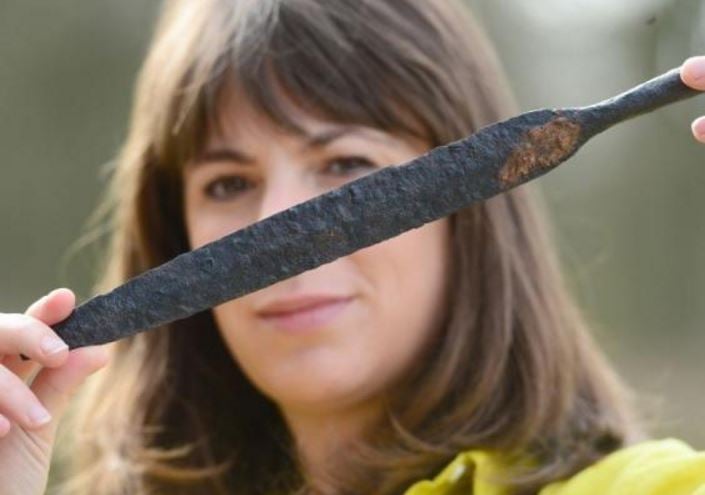 Office Manager at MAP Archaeological Practice, Sophie Coy, holds up a spear head discovered at the excavation site. (Image: maparchltd.com)
Office Manager at MAP Archaeological Practice, Sophie Coy, holds up a spear head discovered at the excavation site. (Image: maparchltd.com)
Peter Morris, who works at David Wilson Homes as Development Director, said regarding the discovery:
“At present we are still at the early analytical stages of reviewing these findings, however we do understand that this discovery is very rare and of international importance.”
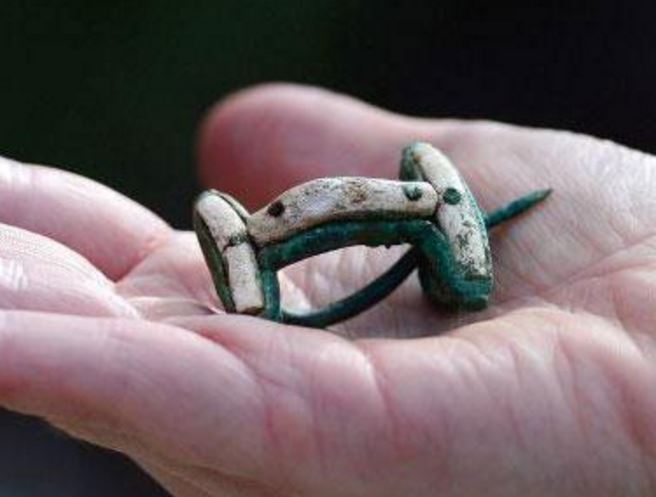 Sophie Coy holds a bronze brooch with a coral enamel. (Image: maparchltd.com)
Sophie Coy holds a bronze brooch with a coral enamel. (Image: maparchltd.com)
The Iron Age
The Iron Age was a period in history that followed the Bronze Age. During the Iron Age there was a prevalence of iron usage. Historians, archaeologists and anthropologists say that iron production started at about 1200 BC in Anatolia, the Asian region of modern Turkey.
Some experts say there is evidence pointing to iron production occurring earlier than 1200 BC.
Europe started working with iron in the late 11th century BC, when migrants from the Caucasus brought the technology with them. Widespread iron technology usage was implemented in Europe and Asia at the same time.
The Iron Age is divided into five periods:
– Earliest Iron Age: 800 to 600 BC.
– Early Iron Age: 600 to 400 BC.
– Middle Iron Age: 400 to 100 BC.
– Late Iron Age: 100 to 50 BC.
– Latest Iron Age: 50 BC to 100 AD.
Video – Arras Iron Age Cemetery Discovered
In a small East Yorkshire village, archaeologists were digging on a site where a new housing project was planned. Racing against the clock, before construction started, they soon uncovered a huge Iron Age cemetery laid out in distinctive square barrows.


Comments are closed.